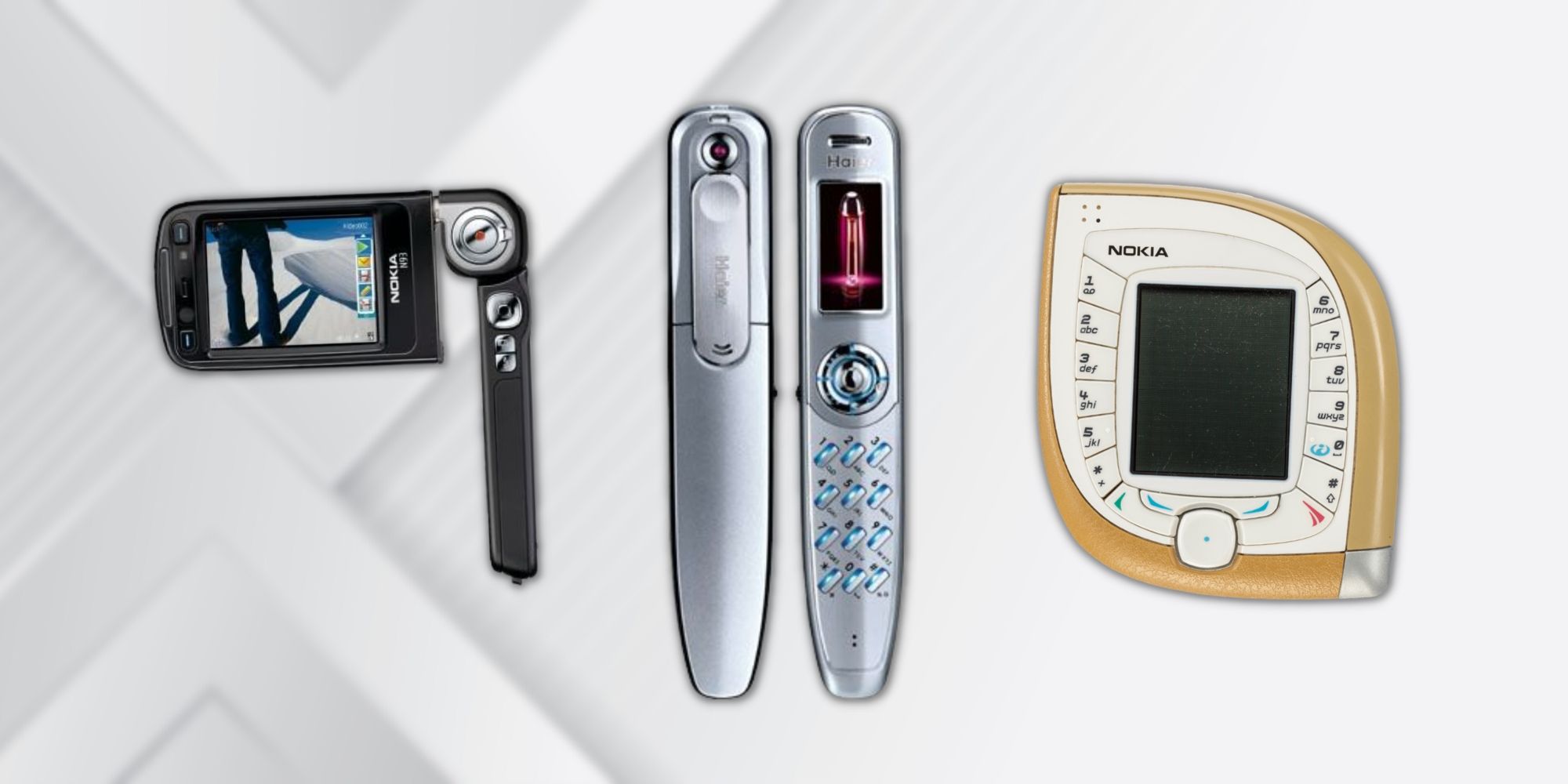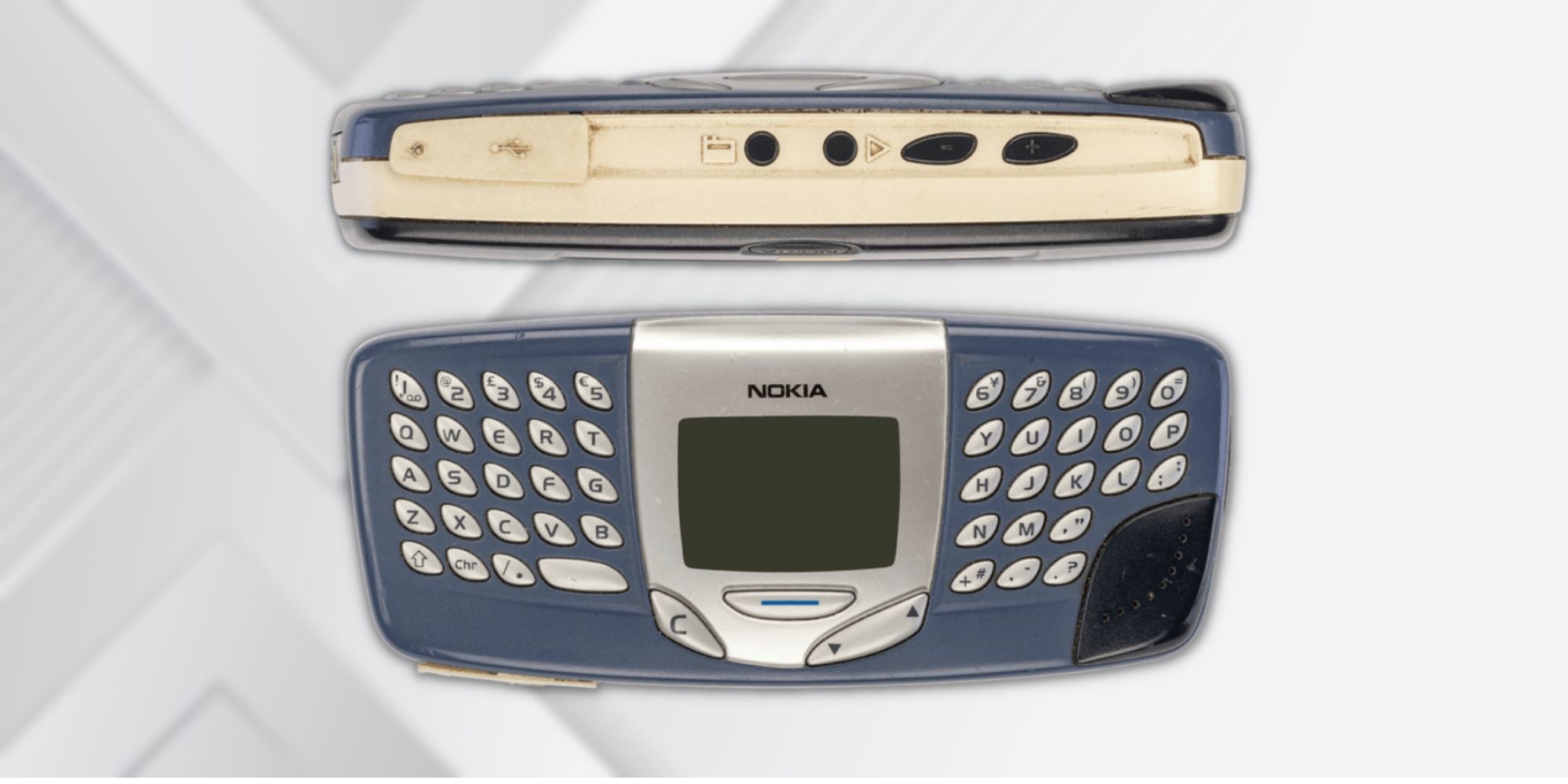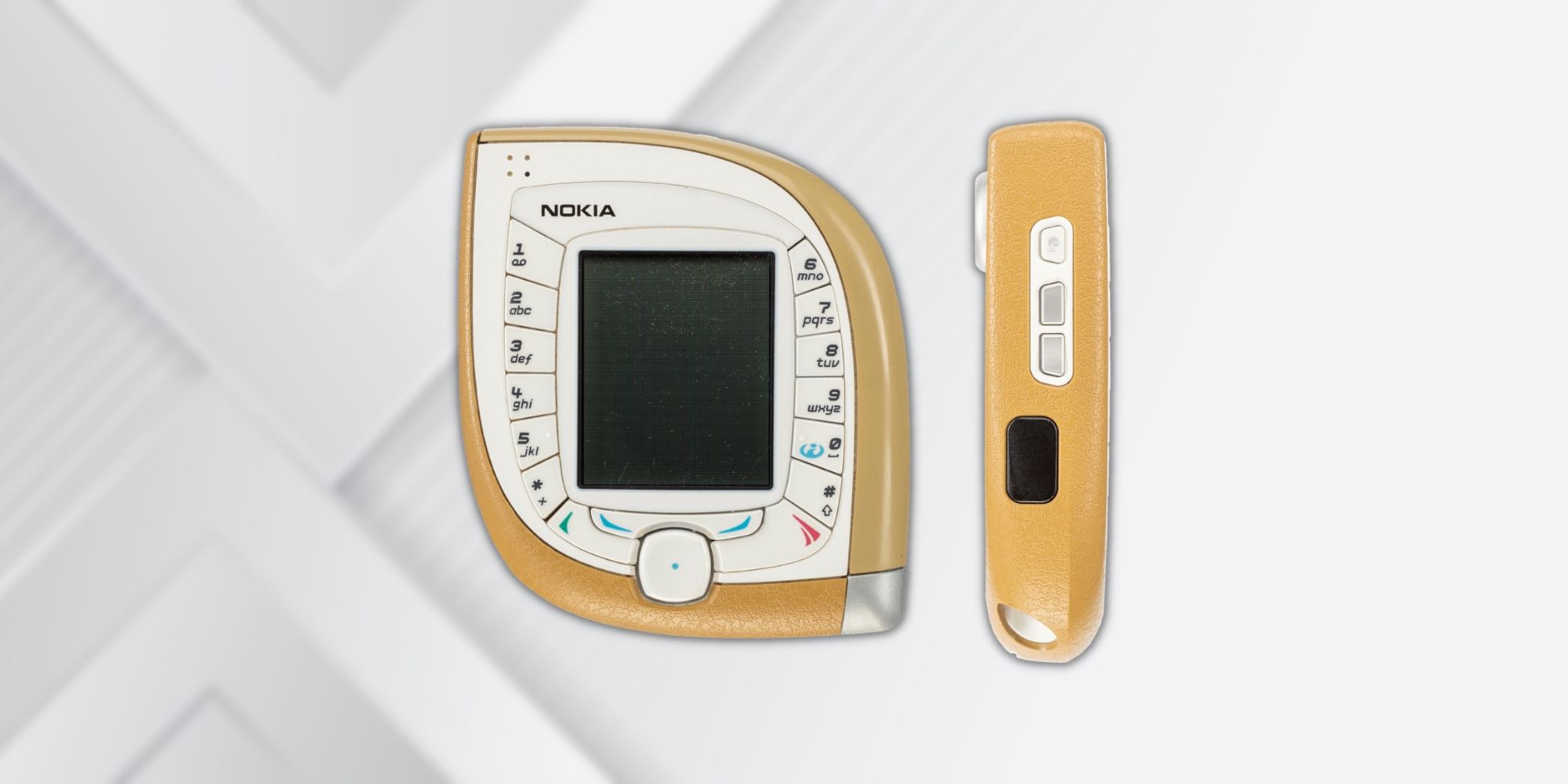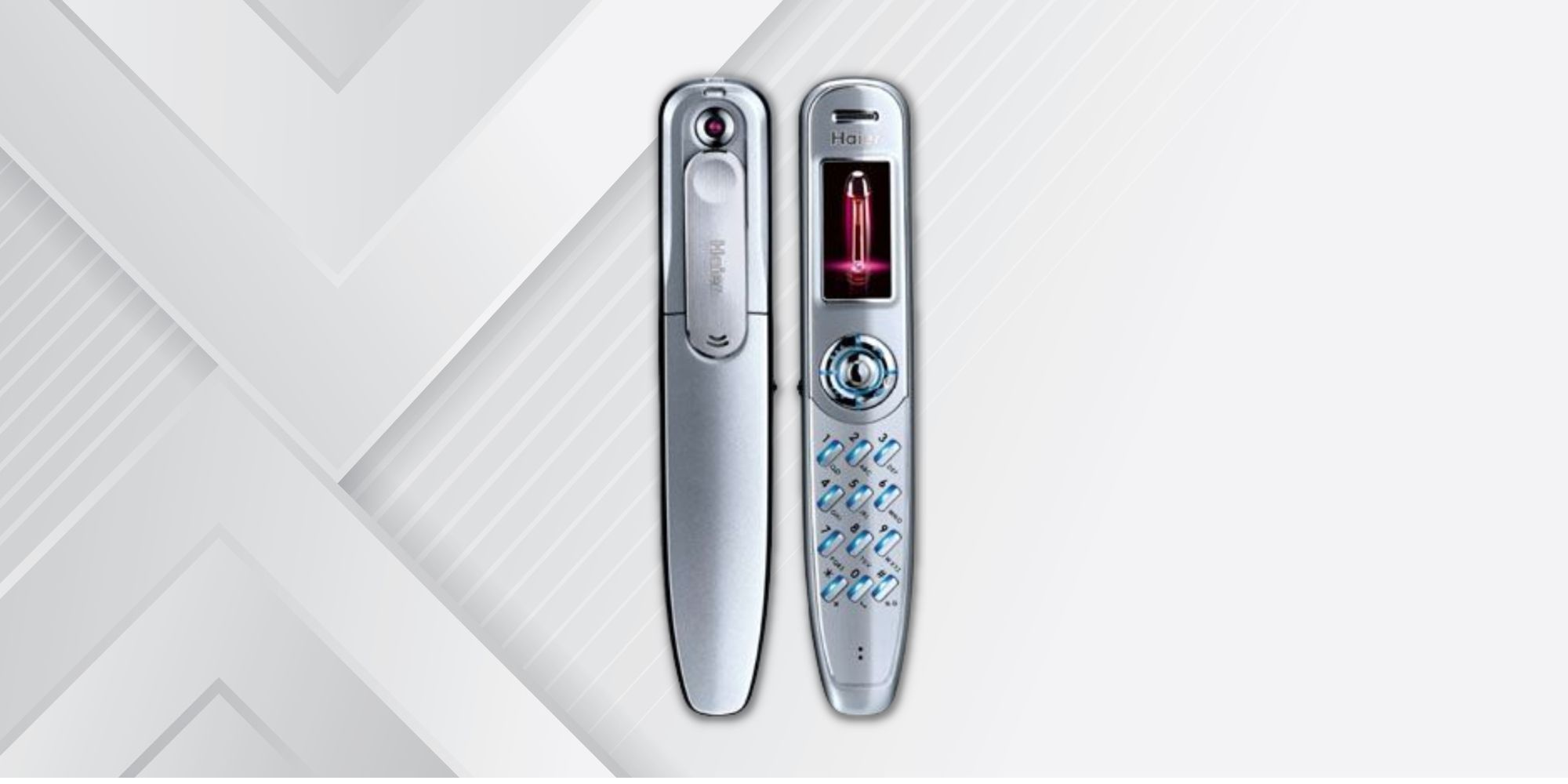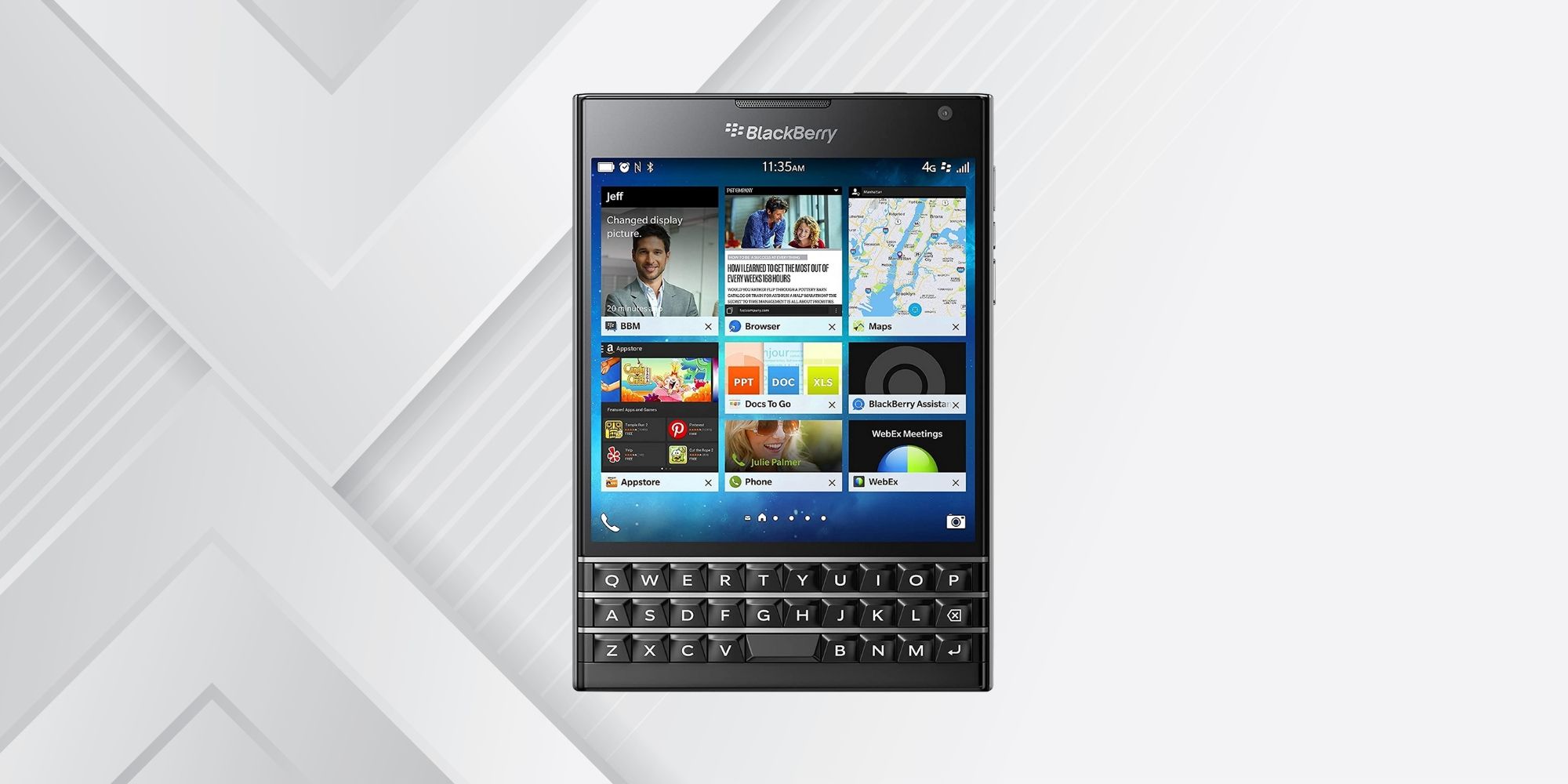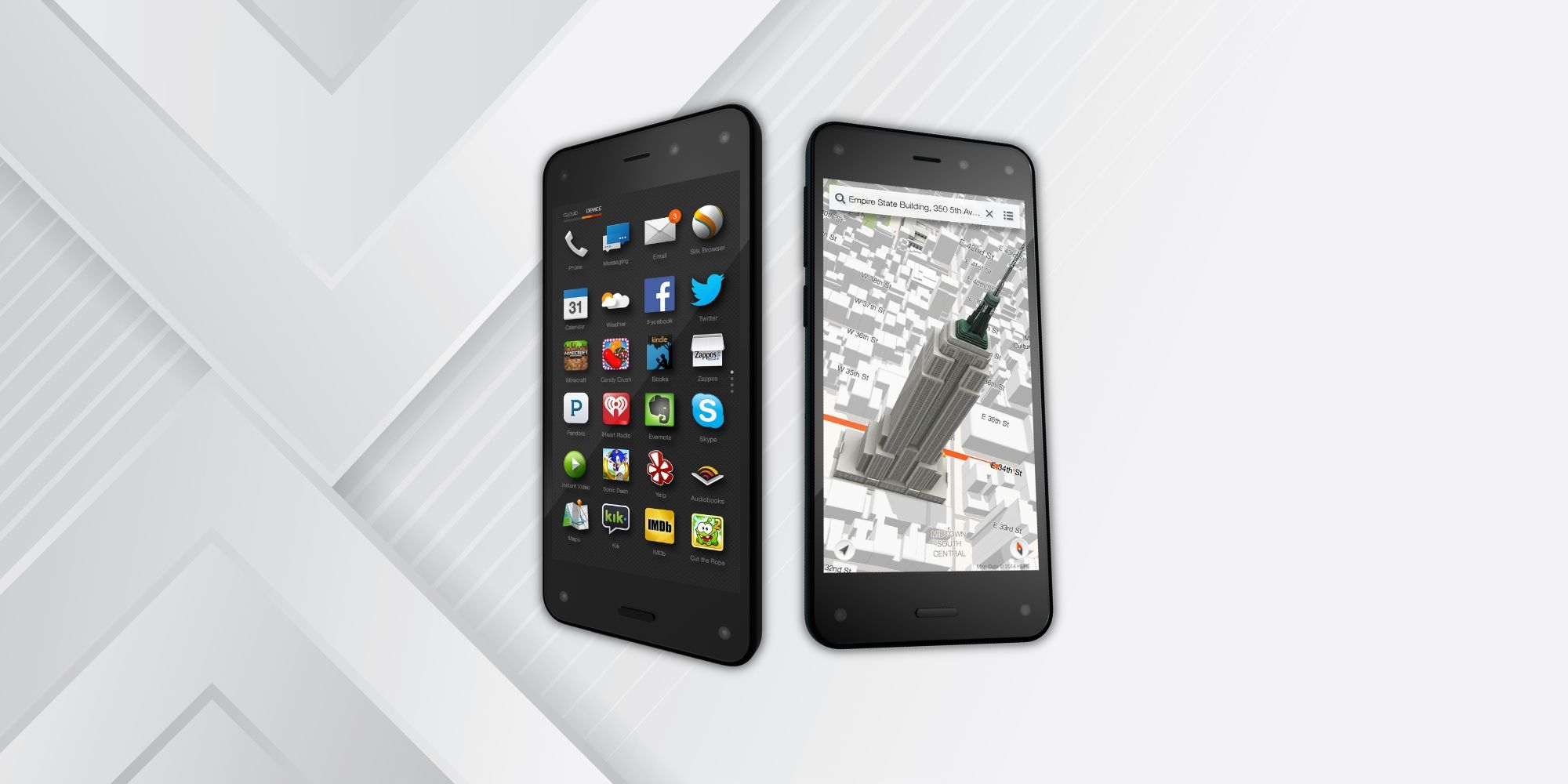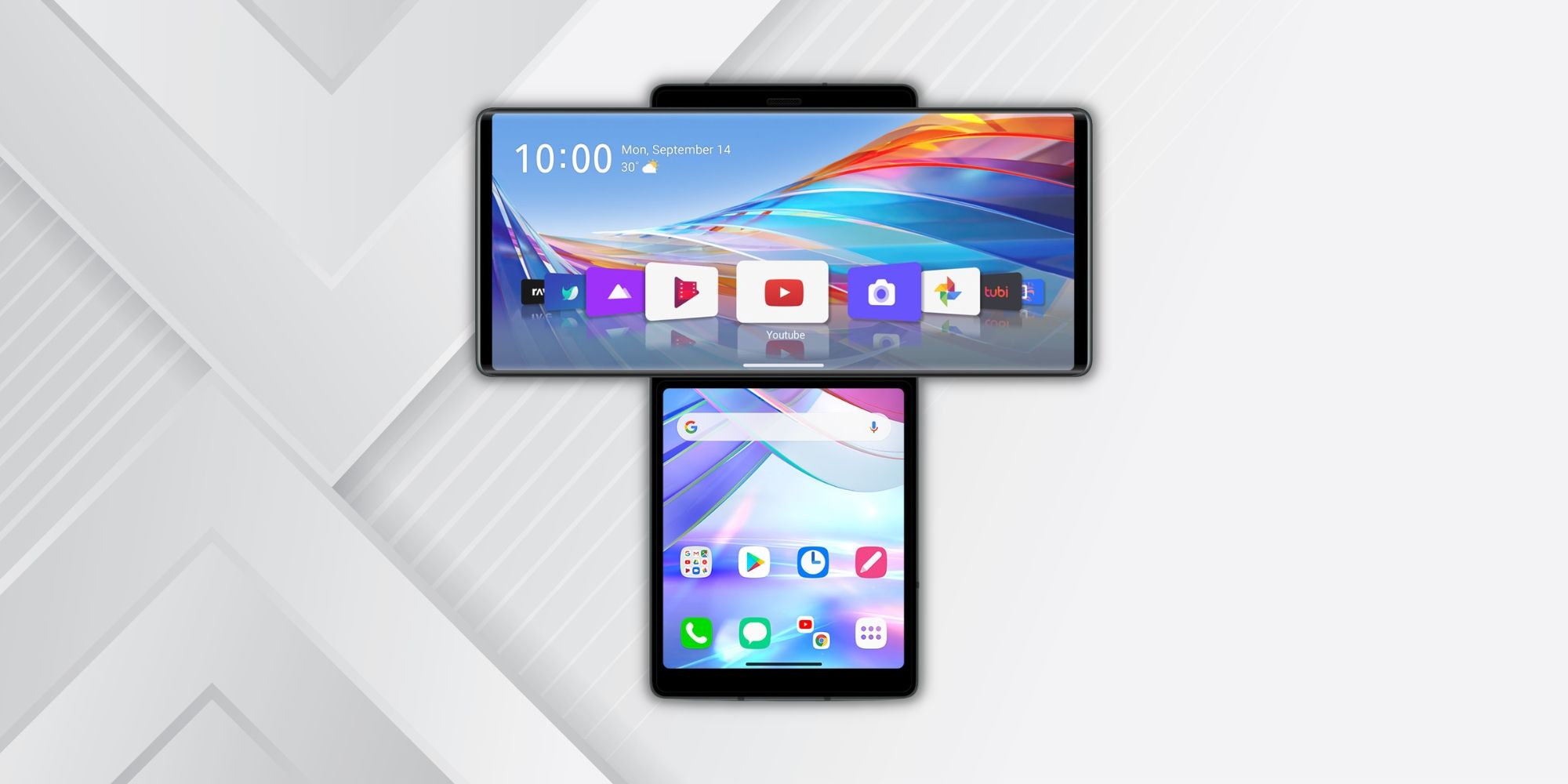Mobile phones have come a long way in the last 50 years. From the Motorola DynaTAC 8000x – the first mobile phone that weighed over four pounds and could only make phone calls – to modern-day smartphones that weigh under 200 grams and are powerful computers, a lot has changed. During this time, phone brands have experimented with countless designs, some of which never even made it out of the patent files. Most smartphones these days feature a similar form-factor – a slab with a display on one side and rear cameras on the other. Brands like Samsung, Motorola, and Google do offer foldable phones, but the days of ridiculous phone designs are pretty much over.
Before iOS and Android monopolized the smartphone market, it was quite common for brands to come up with wild form factors. While the craziest phones were launched in the early 2000s, some were launched more recently. Given their unusual designs, most of these phones didn't last long in the market. Here's a look at the weirdest mobile phones released over the years.
12 Nokia 5510 (2001)
At a time when Nokia ruled the mobile phone market with one of the most popular phones of the time – the Nokia 3310 – the company thought it would be a great idea to launch a phone with a horizontal QWERTY keypad and a tiny display in the center. The Nokia 5510 was great for texting, but the screen was awkwardly placed, and users had to tilt the phone sideways to answer a call. Despite its clunky form factor, the phone was ahead of its time in some ways, given that modern smartphones are used in a horizontal orientation for watching videos and playing games.
11 Nokia 7600 (2003)
In 2003, two years after the 5510 made its debut, Nokia launched the teardrop-shaped Nokia 7600 aimed at the younger demographic. Like most feature phones, the Nokia 7600 had a rectangular screen. However, unlike other phones, the keys surrounded the screen, making the phone difficult to type on. Although the the Nokia 7600 could connect to 3G networks and had a 0.3MP camera, the bizarre design made it pretty much impossible to use for calling or texting.
10 Siemens Xelibri 6 (2003)
2003 seemed to be the year of wacky phones, as Siemens also released the ridiculous Xelibri 6. Designed in the shape of a compact powder (and clearly targeted at the female demographic), the mobile phone featured a clamshell design with a hinge in the middle. Inside, the phone had two mirrors, one with a magnifying effect. Like the Nokia 7600, the keypad wasn't its usual layout, and instead, surrounded one of the mirrors. The tiny display was placed within the mirror at the top.
9 Haier P7 Pen Phone (2004)
The Haier P7, also known as the Pen Phone, was designed in the shape of a rather bulky pen. The phone had an earpiece on one end, while the other end had two holes for the microphone. The buttons, arrow keys, and a tiny screen were placed at the top, with a D-pad and cramped keyboard below. It also had a VGA camera and a USB port at the bottom. The phone could last for up to six days on a single charge, but due to its peculiar design, it wasn't popular among users.
8 Motorola MPx (2004)
Perhaps one of the most innovative phones of the early 2000s, the Motorola MPx came with a dual-hinge design, which allowed users to unfold it in two ways – vertically like a flip phone, or horizontally like a laptop. It featured a 2.8-inch color display and ran Microsoft's Windows Mobile. Interestingly, the mobile phone also came with a built-in stylus pen. Although the phone was targeted at professionals, it was too complicated for its time. The following year, Motorola released the original Razr flip phone, which laid the foundation for modern-day clamshell foldables like the Galaxy Z Flip.
7 Samsung Serene (2005)
In 2005, Samsung released a phone in collaboration with Bang & Olufsen, the high-end audio brand. The phone had a motorized aluminum hinge that opened like a laptop. One half of the phone had a display, while the other had a circular keyboard and an iPod-like scroll wheel. Apart from the awkward design, the phone didn't have essential features like an MP3 player, video recorder, or 3G connectivity, all of which were pretty standard on mobile phones at the time.
6 Nokia N93 (2006)
The successor to the Nokia N90 (2005), the Nokia N93 came with a swivel design that made it look like a camcorder. This was when camera phones were gaining steam, and Nokia was confident they were the future. The Nokia N93 had a 2MP camera that offered up to three times optical zoom, auto focus, flash, and some editing features. However, all the camera tools aside, the clunky design made it too bulky to be carried around. The 2.4-inch screen could open vertically or horizontally, or be twisted into a camcorder. The Nokia N93 even had a tiny cover LCD display that showed information like the time, incoming calls, currently playing music track, and more.
5 Toshiba G450 (2008)
One of the weirdest-looking mobile phones ever made, the Toshiba G450 featured a remote-like design with three circular elements. The round display was placed right at the top. Below this were two alphanumeric keypads. For some reason, Toshiba decided to split the keypad, with the numbers 1-6 appearing in the middle, and the numbers 7-9 at the bottom. This made typing on it confusing and counterintuitive. The phone came with additional features like an MP3 player, USB, and an HSDPA modem, but lacked essentials like Bluetooth.
4 Samsung Galaxy Beam (2012)
In 2012, Samsung thought it would be a great idea to nestle a mini projector into the Galaxy S2's chassis. And that's how the Samsung Galaxy Beam was born. The nHD (640 x 360 pixels) Pico projector offered a brightness of 15 lumens, and could project videos and images up to 50-inches in size at a distance of up to six feet – pretty impressive for a projector built into a phone. Despite the unique design, the Galaxy Beam featured outdated hardware and two-year-old software, neither of which helped its sales.
3 BlackBerry Passport (2014)
By 2014, companies like Apple and Samsung were taking over the smartphone market. At a time when smartphones were moving from physical keyboards to touchscreen-only form factors, BlackBerry released the Passport, a phone with an awkward square-shaped screen and a full-size QWERTY keyboard underneath. Although the 4.5-inch screen was touch enabled, the odd aspect ratio wasn't ideal, and the keyboard was pretty cramped. In addition, the Passport was wider than most smartphones, making it difficult to hold one-handed or carry in a pocket.
2 Amazon Fire Phone (2014)
In 2014, Amazon attempted to enter the mobile phone market with the Fire Phone. The phone featured a total of six cameras, out of which only two could be used for taking photos. In the front, the phone had five cameras – one on each corner, and one selfie camera placed off-center on the top bezel. The four corner cameras enabled some cool features like gesture control and Dynamic Perspective that tracked a user's head movements.
The phone also featured Firefly integration, a form of AI that could recognize objects and information and provide additional context. However, the phone was let down by its complex interface and boring design. Additionally, it didn't provide access to the Google Play Store, restricting users to using Amazon's App Store which had limited options.
1 LG Wing (2020)
The LG Wing was the company's take on a swivel smartphone. LG's display division has released plenty of foldable and rollable concepts, but the Wing's oddly shaped design offered dual screens, where the top screen could be rotated, leaving the bottom screen in vertical orientation. The result was a hammer-shaped design that could result in a couple of use cases. Users could run an app on the horizontal display and access its controls on the vertical screen. Alternatively, users could run one app on the horizontal display and another on the vertical display.
The displays weren't the only moving components of the phone, as it also featured a pop-up selfie camera – another relic of the past. While the LG Wing was praised for its slick software, it was the among the last devices the company's smartphone division ever released, before shutting down completely due to declining sales.

